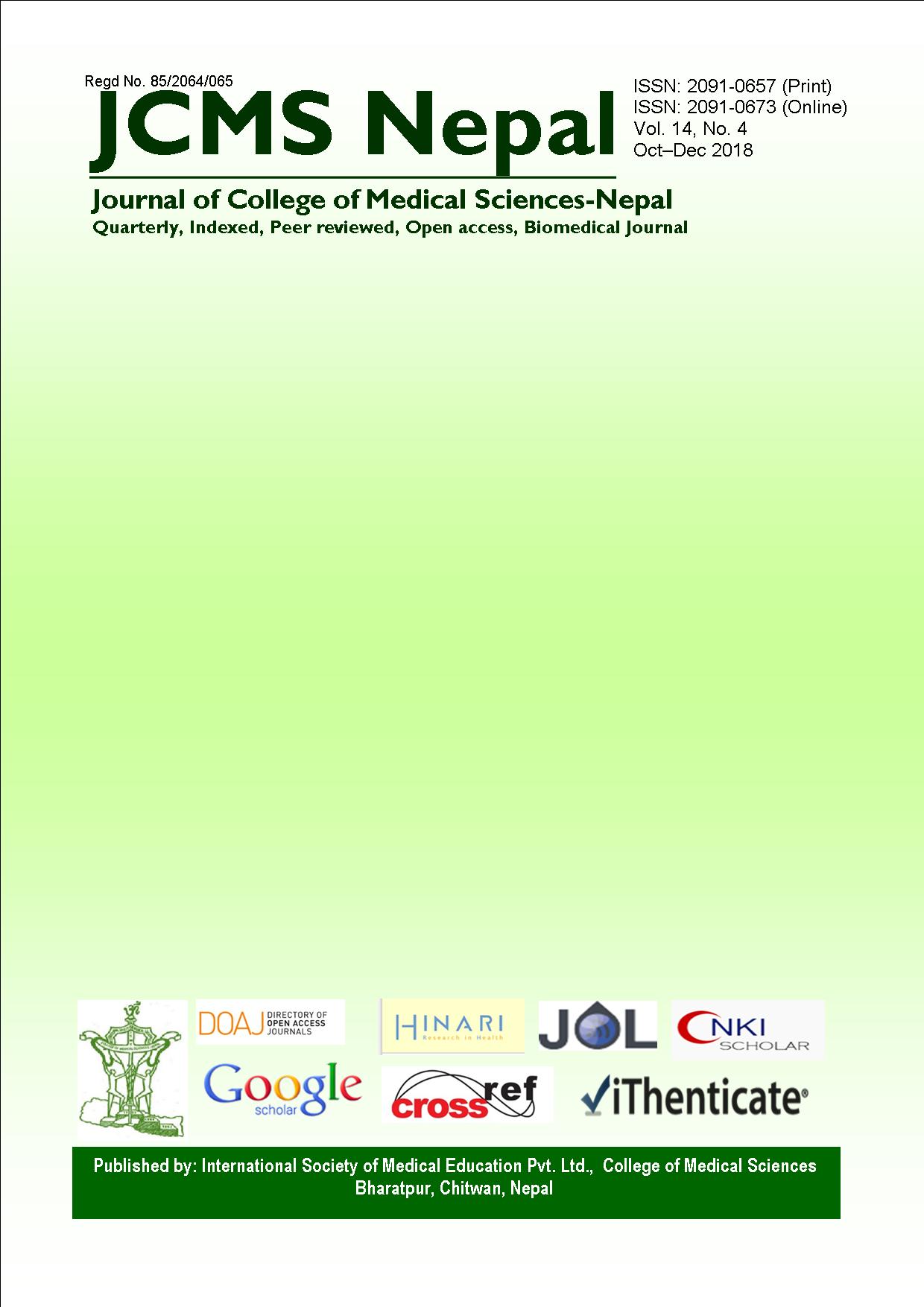Nasal Colonization of Staphylococcus aureus and their Antibiograms among School Children in Bharatpur, Nepal
DOI:
https://doi.org/10.3126/jcmsn.v14i4.19511Keywords:
MRSA, Multidrug ResistantAbstract
Background: Nasal carriage of Staphylococcus aureus has been linked to several community-acquired and nosocomial infections. The present study was undertaken to determine the prevalence and antibiotic susceptibility patterns of S.aureus colonizing the anterior nares of school children in Bharatpur, Nepal. Materials and Methods: In a cross-sectional study, 206 school children aged 3-15 years from fourteen different government schools in Bharatpur, Nepal were enrolled from January to May 2017. Prior to collecting sample, permission was sought from the administration of each school. All the participants were informed about the purposes of the study and the method of sample collection. Isolation of S.aureus and their antimicrobial susceptibility testing were performed by standard microbiological procedures. Results: S. aureus was isolated in 35(16.9%) cases of which 6 (17.1%) were methicillin-resistant S.aureus (MRSA) and 7 (20.0%) were multi-drug resistant (MDR). Prevalence of S. aureus and MRSA was higher in the age group 10-15 years (24.1% and 3.6%) compared to the age group 3-9 years (8.5% and 2.1%) (p=0.003).All the isolates were sensitive towards vancomycin and amikacin. Conclusions: Promotion of good hygienic practices among school going children can be suggested to abate the risk of spread and infections by S.aureus.
Keywords: antibiotic resistance; MRSA; nasal carriage; S. aureus; school children.
Downloads
Downloads
Published
How to Cite
Issue
Section
License
This license enables reusers to copy and distribute the material in any medium or format in unadapted form only, for noncommercial purposes only, and only so long as attribution is given to the creator.




